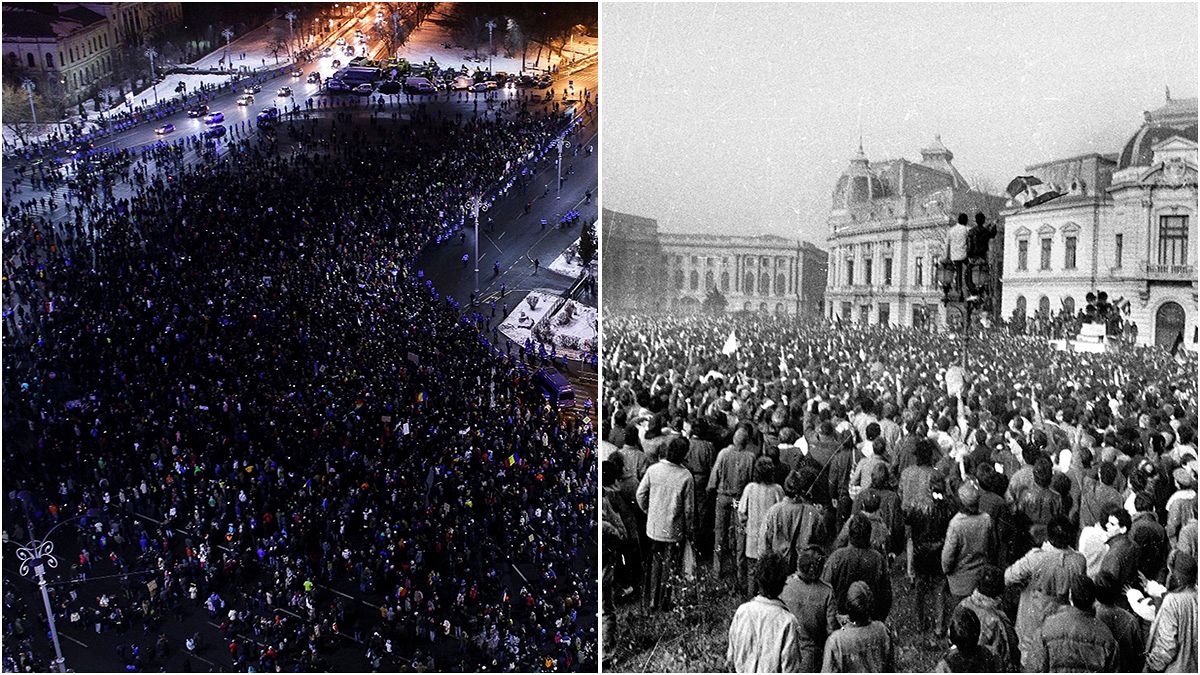Romania has this week seen its biggest protests since its bloody revolution in 1989, as hundreds of thousands of demonstrators took to the streets to show their objection to new laws they claim will h
Romania has this week seen its biggest protests since its bloody revolution in 1989, as hundreds of thousands of demonstrators took to the streets to show their objection to new laws they claim will harm the country’s anti-corruption fight.
Here we explore the similarities and differences of December 1989 and January 2017, with the help of Dr Cristian Nitoiu, an expert on Eastern Europe from Aston University, and Cătălin Dumitru, a political consultant at Bucharest-based Kensington Communication.
What was at stake
Protesters were fighting for democracy in 1989; this week they claimed they were battling to save key parts this new system, such as respect for the rule of law.
This, claimed Nitoiu, means demonstrators were more united in the late 80s.
“Society is very polarised among those who want to have a system of governance which is based on rules and respect and another half of society which feels very comfortable in having a system of governance based on patronage and being able to hold administrative positions without having any kind of expertise but just paying your way into those positions,” said Nitoiu. “There wasn’t this level of polarisation in 1989.
“It was more unified in two respects in 1989,” he added. “Getting rid of a dictator and moving towards a more democratic system.”
Profile of protesters
The protesters from both eras were smart and young, but those in 1989 were more united in their political views, the experts said.
“The similarities is they were both young,” Dumitru told Euronews. “Now it is also corporate people, back then it was wanna-be-corporates.
“In 1989 they were willing to do anything to live and work like people outside Romania in the west,” he said. “Now most of them are from the private sector. They go to work from 7am to 6pm and after that they go to protest!”
Nitoiu said a key difference was the protesters in the late 1980s were closer politically than they are today.
He claimed it would have been unlikely to see anyone from the communist establishment protesting during the revolution, whereas this week there have been disappointed supporters of the ruling PSD party out on the streets.
Violence levels
One of the key features of this week’s protesters is that many of them – perhaps with the experience of 1989 in their minds – have learned the culture of protest, according to Dumitru.
“They know how to react when someone wants to manipulate the protests and plant some hooligans,” he said. “Two days ago there was an example of that in Bucharest – they [the protesters] backed down and left the hooligans just with the police.
“In 1989 they were more naive. They just wanted to go and fight and forget about their lives, their jobs and families because they were so frightened that they would lose everything and go back and live in a communist system.
“Now it’s not a war, it’s a peaceful protests. They understand if they stand still, they will gain.
“It was very different in 1989, there were people on the streets shooting and we were closer to a civil war back then.”
Media
One of the key differences is in 1989 there was only state-controlled media; now there are multiple news channels as well as social media.
Dumitru says the influence of Twitter and Facebook means people are now out on the streets protesting quicker, but it has also made governments more cautious because they know any incident can be quickly published to social media networks.
Nitoiu said the extra media choice was not necessarily a positive development.
“There is a lot of fake information and so much conflicting news, which means people tend to stay in their own bubbles.
“If they believe the government is abusing power they don’t listen to the government’s justification, even though there may be legitimacy in what they are saying.
“On the other hand people that support the government – they think the government is giving us more money and creating new opportunities, so we don’t care about corruption.”
Your views
Here are the thoughts of our Facebook followers on this subject:
